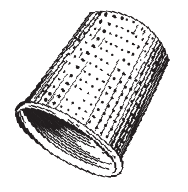And sometimes, honestly, I wonder what that is.
Sure, they strut along a building ledge, squat
on the head of a statue, dive through trees
in the park. But unlike songbirds
mixing their sense of joy with the hyacinth
and bluebells of spring, lifting us all with them
in their wonder, pigeons twitch and turn mutely
like a drunk uncle too far gone now
to take part in the family discussion. You know,
the one who believes all the conspiracy theories
from the Illuminati to Area 51. When they finally
work themselves up to coo and puff their neck
at a female, it seems desperate, full of all
the insecurity I remember from dating.
I feel embarrassed for them since they seem
unable to feel it themselves. And though they nest,
like every other bird, I’m not surprised I’ve seen
them described as “flimsy.” Just imagining them
constructing something so associated with coziness
and warmth, contradicts the dead stare from their eyes,
those discs that look with the incomprehension
of a needle used to suture the two halves of a wound
that keeps breaking open and will not heal.
What Pigeons Do

Michael T. Young’s third full-length collection, The Infinite Doctrine of Water, was longlisted for the Julie Suk Award. His previous collections are The Beautiful Moment of Being Lost and Transcriptions of Daylight. He received a Fellowship from the New Jersey State Council on the Arts. His chapbook, Living in the Counterpoint, received the Jean Pedrick Chapbook Award. His poetry has been featured on Verse Daily and The Writer’s Almanac. It has also appeared in numerous journals including One, Pinyon, Valparaiso Poetry Review and Vox Populi.

